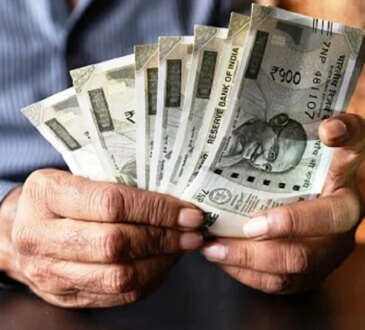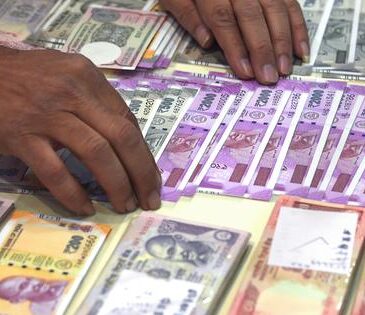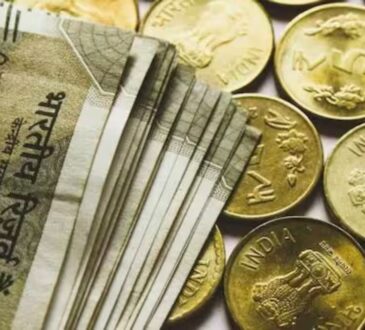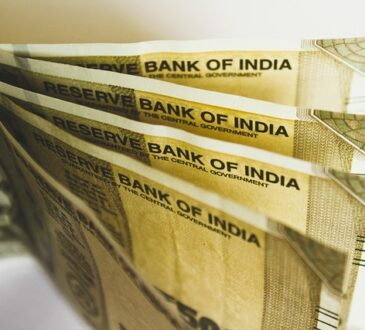The dollar under pressure: Why Trump’s trade war is also a currency war | Economy and Business
The dollar has not been immune to the intense volatility that has gripped financial markets this year, particularly in the wake of President Donald Trump’s inauguration last January. That same month, the euro dipped as low as $1.02 amid speculation about potential parity between the two currencies. However, by mid-March, the euro staged a strong rebound, rising to $1.094. The latest blow came with last week’s announcement of the U.S. tariff policy, pushing the dollar down further. The currency is now trading at $1.10 per euro, marking a 6.25% depreciation against its European counterpart since January.
Driving these sharp fluctuations are several key developments: Trump’s proposed tariff measures, growing concerns about a potential slowdown in U.S. economic growth, and a wave of exceptional public spending announcements across Germany and other European nations aimed at bolstering defense. These factors have contributed to a surge in the yield on Germany’s 10-year bond, which has climbed to 2.73% from 2.35% at the start of the year.
Higher tariffs in the U.S. are expected to fuel inflation, and therefore, higher interest rates. In this environment, Europe must position itself as an attractive destination for global investors — especially if it hopes to finance its rearmament plans through higher interest rates as well. Currencies are central to this delicate balancing act. And, as is the case in this complex economic exercise, there is no shortage of contradictions.
“We must be prepared for a weak dollar policy,” warns Ignacio Dolz de Espejo, Director of Investment Solutions at Mutuactivos. “If there is no recession, the imposition of trade barriers should lead the U.S. to suffer somewhat higher inflation and higher rates, which would strengthen the dollar. That has not been the case so far because the market is pricing in an abrupt slowdown in growth. If the dollar were to strengthen again, we would surely see Trump send out messages aimed at weakening his currency,”
Aiman Shanks from Schroders agrees: “In theory, tariffs and a stronger economy should benefit the greenback, but uncertainty about the chaotic and rapid pace of executive orders since late January, coupled with the impact this is having on the U.S. economy, has clearly dampened investor enthusiasm for dollar assets. This currency could still perform well if there is a flight to defensive assets and if persistent inflation prevents the Federal Reserve from significantly easing its monetary policy,” he explains. A sign of this temporary lack of confidence in the dollar can be seen in the stronger gains of European stock markets this year compared to Wall Street
But the underlying question raised by many analysts is whether Trump wants the dollar to cease being the world’s reserve currency. A fear that, as Benjamin Dubois, Head of Hedge Management at Edmond de Rothschild AM, points out, has already had one major consequence: “the vertiginous rise in the price of gold, which has become the main reserve asset in the absence of a currency that can offer a true alternative to the dollar. The price of gold has gained more than 60% to exceed $3,000 per ounce,” he explains.
This is a highly significant issue, as mathematician and analyst as Juan Ignacio Crespo points out: “Half the world is watching in stupefaction, and the other half is horrified by what will happen to the dollar as the universally accepted currency and keystone of the global financial system.” Around 70% of international transactions are conducted in dollars, and this dominance has allowed the U.S. to finance itself easily and at lower interest rates than it would otherwise face without its status as the world’s reserve currency.
“The recent decline in the dollar could be the beginning of a deeper underlying trend, and Trump’s second term could see the dollar lose the dominant status it has enjoyed for the past decade,” explains Benjamin Dubois. “This restructuring, theorized by Stephen Miran, Donald Trump’s chief economic advisor, is based on the conviction that the dollar must depreciate to allow for U.S. reindustrialization. Tariffs are a central element of his strategy, which encourages other countries to reach an agreement on currencies. This is what is known as the Mar-a-Lago agreement, similar to previous currency agreements named after the location where they were signed, such as Bretton Woods (1944), the Plaza (1985), and the Louvre (1987).”
Consequences
The dollar’s dominance has long been underpinned by its global reputation as the least risky currency. In its 25-year history, the euro has yet to claim that role, and more recently, the efforts of the BRICS nations (Brazil, Russia, India, China, and South Africa) to create a competing currency have failed to gain traction. Philippe Waechter, Chief Economist at Ostrum AM, envisions a world where the dollar is no longer the global reserve currency — a scenario he finds deeply troubling. In his view, a monetary system without the dollar at its center would raise serious concerns, particularly around liquidity, and would likely involve a long and painful adjustment for global growth and employment.
“The loss of confidence in the dollar stems from White House policy, which will not spontaneously translate into a new framework. The processes are long and chaotic, with the risk of being associated with conflicts, as the lack of adjustment within each region would provoke tensions that could become unbearable. The U.S. shift, its autocratic dimension, and its isolationism are not reassuring investors about U.S. assets and the dollar. But the inevitable change will bring chaos,” Waechter explains.
Forecasts about the euro
The long-anticipated “Liberation Day” has arrived, plunging the world into a global trade war. Last Wednesday, U.S. President Donald Trump announced a universal 10% tariff, with even steeper penalties for key trading partners. The European Union faces a 20% tariff, while China is hit with a 34% rate. These unprecedented measures, justified by questionable trade grievances, are shaking multiple economic indicators — none more visibly than the currency markets. Previous forecasts for the euro-dollar exchange rate have been rendered obsolete.
What’s clear is that the euro is gaining strength against the dollar. The day after the announcement, the euro had its strongest performance against the greenback since 2015. Despite its recent gains, Citi analysts see room for further appreciation, setting a medium-term target of $1.15 per euro. Slower growth in the US economy is expected to force the Federal Reserve to be more aggressive in lowering interest rates.
Sign up for our weekly newsletter to get more English-language news coverage from EL PAÍS USA Edition




